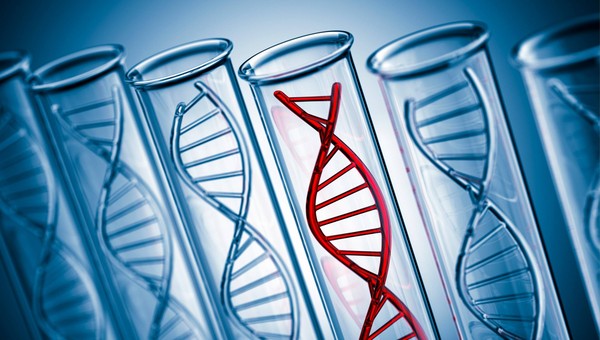Each year, various types of cancers account for over 10 million deaths worldwide meaning this ‘silent killer’ is quite possibly the most fatal disease known to mankind. Although a cure for cancer remains the ultimate goal of modern medicine, advancing technologies & equipment are allowing healthcare professionals to screen & detect possible signs of the illness much earlier in its lifecycle which leads to better disease management and allows a chain to reduce a patient’s eventual pain & suffering.
While tissue biopsies remain the highest standard for identification of tumors & are clinically more preferred based on the accuracy of diagnosis, huge strides have been made in the domain of liquid biopsy, primarily due to its relatively non-invasive nature and its utilization in metastatic varieties of cancer.
METHODS OF OPERATION:
Tissue Biopsy:
- It requires a physical specimen which is extracted from within the body, usually through a surgical procedure which may involve numbing the area through anesthetics or an induced loss of consciousness. The internal sample is generally taken from the tumor (if its location has been pinpointed & it’s safely accessible via invasive measures), from the patient’s bone marrow, skin or even through a needle to collect cells which have been deemed to be suspicious.
- Post extraction, the sample is generally preserved by freezing or chemically treated following which it’s either sliced or broken down into tiny parts for study & analysis under a microscope.
- The results then allow your oncologist or doctors understand whether that cell is cancerous or not as well as identify what kind of cancer you may have & where its origins lie. Furthermore, they can also provide information on how aggressive or life-threatening the cancer is, stated between Stages 1 to 4.
Liquid Biopsy:
- Using this method, body fluid such as blood, urine samples & saliva swabbed from the mouth are collected in a relatively risk-free, painless way.
- Liquid biopsies are used to measure & analyze cell-free DNA (cfDNA) which is a type of DNA released by cells into bodily fluids when they die. A critical cfDNA is referred to as ‘circulating tumor DNA’ or ctDNA which originates from a cancerous cell or tumor.
- In a biopsy, the search for cancer is done by analysis of genetic material. The most common method is called whole genome sequencing (WGS) which scours the genome structure of an individual to detect certain abnormal mutations or biomarkers associated with the onset or existence of cancer.
Why is Liquid Biopsy Emerging as an Equally Useful Alternative to Tissue Biopsy?
- Liquid biopsy is extremely handy as an early warning system to discover biomarkers or mutations of cancer allowing for a better course of action to prevent or treat it at a lower stage.
- Most tumors are extremely unstable & when a tumor metastasizes, it may not be possible or too risky to extract physical samples from different parts of the body. It’s in these cases where non-invasive liquid biopsy techniques are crucial to grasp all the different mutations present at those sites.
- As liquid biopsy essentially maps the human genome, it’s quite useful in the domain of precision medicine or targeted therapies as a pain-free & regular monitoring tool to track progress & tweak the course of treatment which works best for the patient involved.
Drawbacks of Liquid Biopsy:
- The availability of cell-free DNA (cfDNA) is immensely low in body fluid & to make matters worse sensitivity for detection of a plethora of mutations is also sometimes low. Studies have shown that a certain type of mutation may be over-represented or under-represented, varying sample-to-sample or test-to-test.
- As research into liquid biopsy techniques continues, it has been visible that accuracy in this type of diagnostics is lower than tissue biopsy & until globally proven & standardized testing procedures are approved, it will play second fiddle to the traditionally preferred alternative.
- Extraction of physical samples invariably requires surgical procedures of some kind. This unfortunately introduces a risk of infection, possibility of unnecessary external or internal bleeding and relatively longer time to heal & recover for the patient.
- If the extracted specimen is not preserved in a correct & timely, there lies a huge chance of tissue necrosis, rendering the sample & the painful process, completely useless. Conversely excess addition of preservative chemicals can also taint the tissue ending up in inaccurate results or diagnosis.
- Impractical & very risky to surgically remove samples from metastasized tumors.
- Through real world application, it is clearly evident that both types of biopsies serve a specific kind of purpose with completely different methods of use.
- Liquid biopsies have lower turnaround times, are patient-friendly & widely map our genetic structure.
- Tissue biopsies on the other are crucial in the accurate discovery & ID-ing of the inherent type of tumor & the different mutations present.
- Neither method provides a 360° solution for cancer diagnosis but as state-of-the-art technology is integrated with healthcare and research allows us to expand our knowledge and horizons, liquid and tissue biopsy are sure to smoothly complement each other moving forward.

The MarketsandMarkets In Vitro Diagnostics Crystal Ball Event scheduled for the 25th of August shall take a deep dive into the IVD ecosystem with invaluable insights from 4 leading industry experts.
EXPLORE THE 90-MIN AGENDA HERE!
CLICK HERE TO REGISTER FOR THE EVENT.
Ayush Kanitkar
MarketsandMarkets
+91-8975985061





